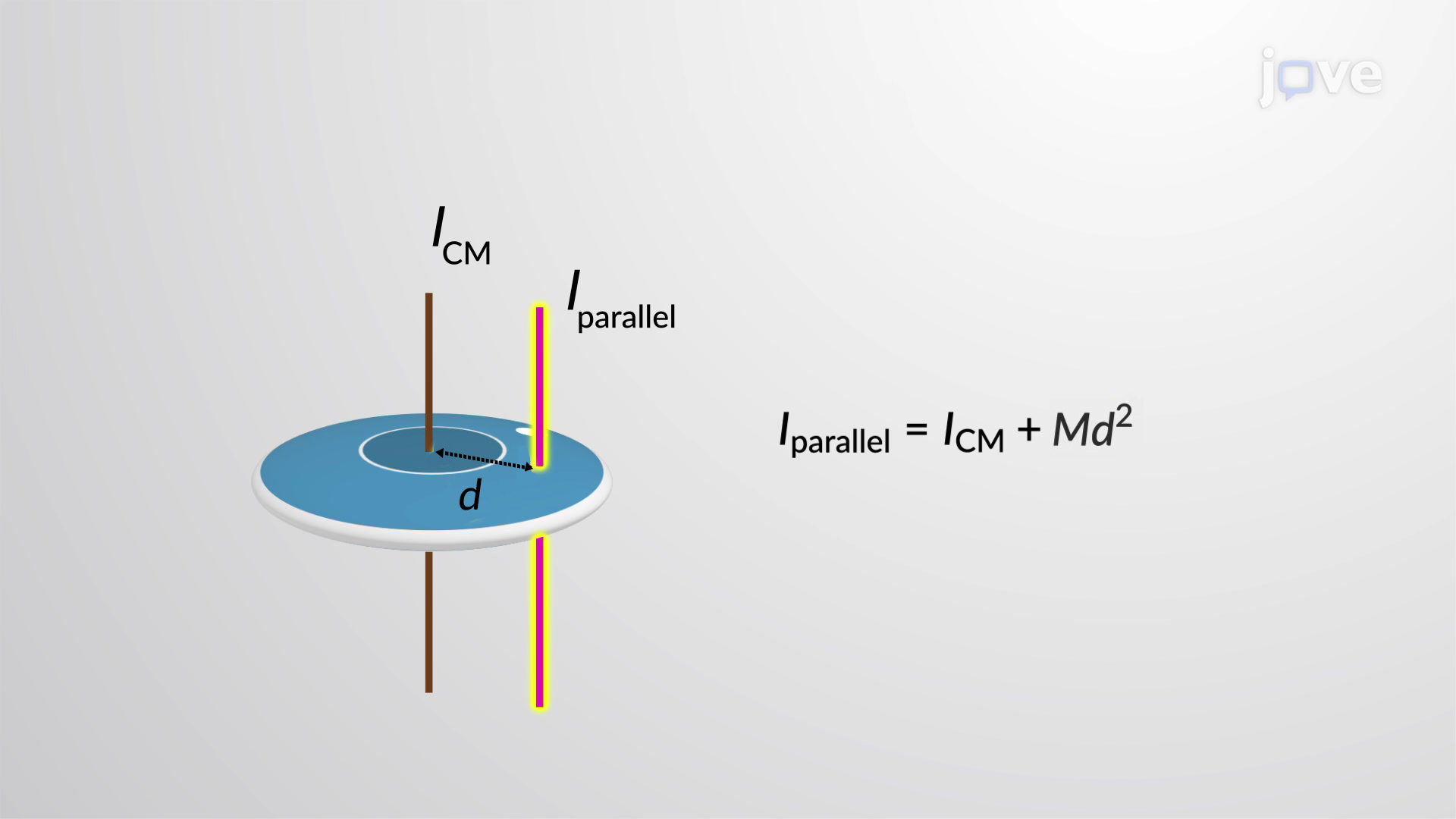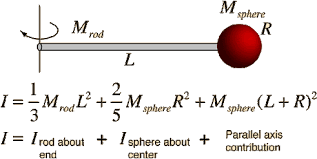Parallel Axis Theorem
Sometimes, we know an object's moment of inertia about an axis through its center of mass (COM), but we need to calculate it about another axis, typically one that's parallel and offset by a distance \( d \). That's when the Parallel Axis Theorem becomes essential. In other words, we use the parralel axis to calculate around a different axis rather than the center of mass.
Theorem Statement
Where:
- \( I_{\text{cm}} \): moment of inertia through the center of mass
- \( M \): total mass of the object
- \( d \): perpendicular distance from COM axis to the new axis
Why It Works
The moment of inertia depends on both the amount of mass and how far that mass is from the axis. When you shift the axis, all the mass is, on average, farther away. The extra \( Md^2 \) accounts for that increased resistance to rotation.

Example 1: Thin Rod, Axis at the End
For a thin rod of mass \( M \) and length \( L \), the moment of inertia about the center is:
To find \( I \) about one end, the axis is shifted by \( d = \frac{L}{2} \).

Example 2: Rod + Sphere (Composite Object)
Suppose we have a uniform rod of mass \( M_r \) and length \( L \), with a solid sphere of mass \( M_s \) and radius \( R \) attached at one end. We want the moment of inertia of the system about the opposite end of the rod.
Step 1: Rod's Contribution
The rod's own moment of inertia about the far end is:
Step 2: Sphere's Contribution
The sphere rotates about the same axis, but its center is at distance \( L + R \) from the axis.
Moment of inertia of a solid sphere about its center:
Apply parallel axis theorem to move axis to end of rod:
Total Moment of Inertia

Tips for Using the Theorem
- Always use the object’s center-of-mass moment of inertia as your starting point.
- Use this theorem when the new axis is parallel to the original one.
- Great for composite objects, like pendulums or rotating beams.
Common Use Cases
- Pendulums: rods or disks swinging about a pivot
- Gears mounted off-center
- Compound systems with multiple bodies
Summary
The Parallel Axis Theorem allows you to easily shift known moments of inertia to new axes and combine them for complex systems. It’s a key tool for analyzing rotational motion beyond idealized center-of-mass setups.